St. Peter's Church in Luc |
The Saint-Pierre Church of Luc, perched in the landscape of Margeride in Lozère, is a testament to medieval architectural heritage. Mentioned as early as the 13th century, it retains its original pentagonal apse in Romanesque style, listed as a historical monument. The rest of the building, altered over the centuries, especially in the 19th century, features a distinctive bell wall typical of the region. Its interior arcades and sculpted capitals illustrate an ancient religious art.
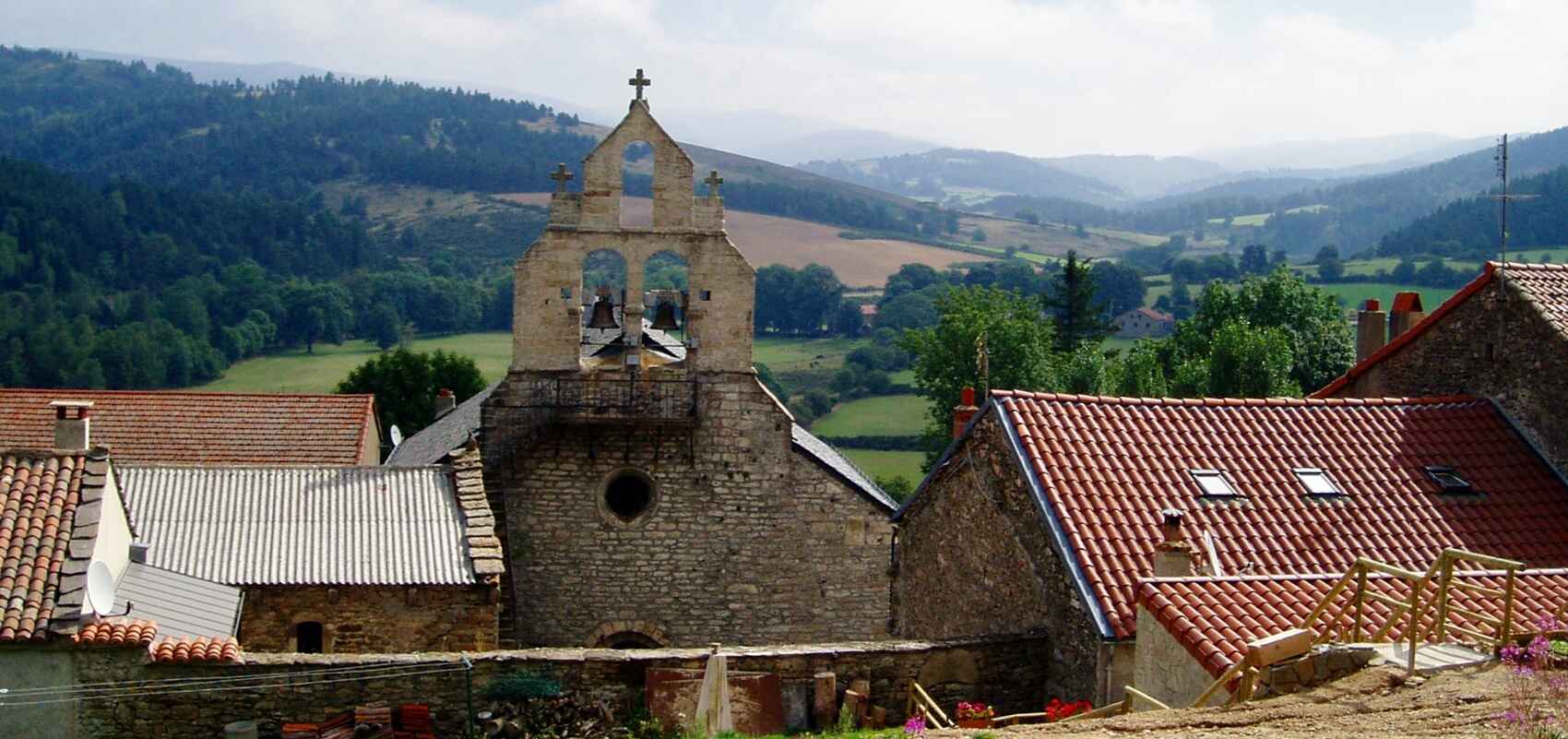
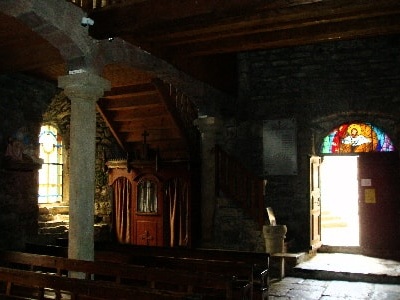 The Church of St. Peter in Luc, located in the Lozère department, is a religious building that has withstood the test of time and trials. It bears witness to the tumultuous history of the region, as well as the faith and devotion of its inhabitants.
The Church of St. Peter in Luc, located in the Lozère department, is a religious building that has withstood the test of time and trials. It bears witness to the tumultuous history of the region, as well as the faith and devotion of its inhabitants.
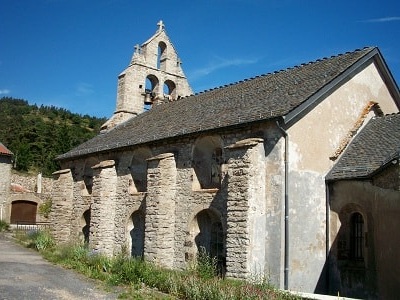 The church in Luc was first mentioned in texts in the 13th century, but it could be older. It was part of a priorate that depended on the Abbey of Aubrac, a powerful abbey founded in the 12th century by monks of the Benedictine order. The Abbey of Aubrac was a spiritual and cultural center, but also a place of welcome and assistance for pilgrims and travelers who took the road from Puy to Santiago de Compostela.
The church in Luc was first mentioned in texts in the 13th century, but it could be older. It was part of a priorate that depended on the Abbey of Aubrac, a powerful abbey founded in the 12th century by monks of the Benedictine order. The Abbey of Aubrac was a spiritual and cultural center, but also a place of welcome and assistance for pilgrims and travelers who took the road from Puy to Santiago de Compostela.
In 1215, the Fourth Lateran Council, which gathered more than 400 bishops and abbots, addressed the doctrine of transubstantiation, annual confession, the crusade against the Albigensians, and the preparation for the fifth crusade. Pope Innocent III sent a golden bull to confirm the privileges of the Abbey of Aubrac, of which the church of Luc was a part. This bull is preserved in the church's treasure, symbolizing its link with the Holy See.
The church was built in the late Romanesque style, with a semi-circular apse, small columns, and sculpted capitals. It also features side galleries and a transverse gallery that served to separate men and women during services. This practice was similar to that in Basque churches but reversed: men stood on the left and women on the right, whereas it was the opposite in Basque churches.
The church displays remarkable decorative elements, such as the modillions that support the cornice, the historiated capitals depicting biblical scenes or fantastic animals, as well as the murals that adorn the vaults. One can admire geometric, floral, or animal motifs, as well as holy or profane figures.
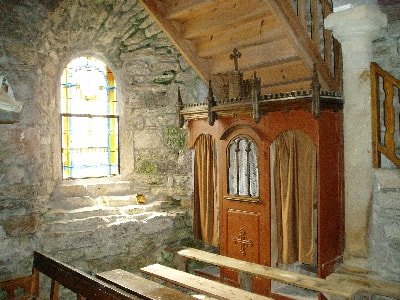 In the 16th century, the church suffered from the ravages of the religious wars. It was plundered and burned by Protestants, who destroyed part of the nave and the bell tower. It was then restored by Catholics, who added a porch and a sacristy.
In the 16th century, the church suffered from the ravages of the religious wars. It was plundered and burned by Protestants, who destroyed part of the nave and the bell tower. It was then restored by Catholics, who added a porch and a sacristy.
The church experienced further degradation during the French Revolution, which led to the confiscation of clergy property and the suppression of worship. It was then used as a barn or prison. It was almost entirely reconstructed in the 19th century, following a public subscription launched by the parish priest of Luc. Only the apse was preserved and listed as a historical monument in 1931.
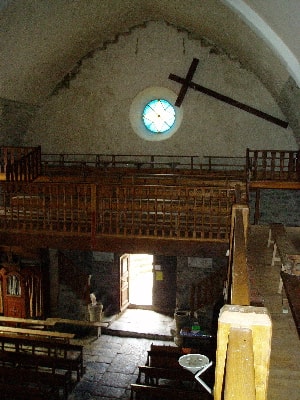 In 1878, the parishioners of Luc transformed the donjon of Luc Castle into a chapel and installed a statue of the Virgin on the terrace. The castle of Luc, dating from the 11th century, was the residence of the lords of Luc, who held many rights and lands in the region. It was besieged and taken by Protestants in 1575, then reclaimed by Catholics in 1593. It was abandoned in the 18th century and sold as national property during the Revolution.
In 1878, the parishioners of Luc transformed the donjon of Luc Castle into a chapel and installed a statue of the Virgin on the terrace. The castle of Luc, dating from the 11th century, was the residence of the lords of Luc, who held many rights and lands in the region. It was besieged and taken by Protestants in 1575, then reclaimed by Catholics in 1593. It was abandoned in the 18th century and sold as national property during the Revolution.
The statue of the Virgin, which measures 2.50 meters high, is made of white-painted cast iron. It is visible from afar and dominates the landscape. It is the object of great veneration from the inhabitants of Luc, who attribute miracles and graces to it. It is also a landmark for hikers and tourists visiting the region.
In the same year as the installation of the statue, the Scottish writer Robert Louis Stevenson passed through Luc during his journey through the Cevennes with his donkey Modestine. He attended Sunday mass and described his admiration for the castle and the statue of the Virgin in his book "Travels with a Donkey in the Cevennes." He wrote: "The castle, with its chapel and statue of the Virgin, stood on a promontory above the village, forming a picturesque and imposing group."
In 1931, the Church of St. Peter celebrated its inscription as a historical monument, thanks to the preservation of its Romanesque apse from the 13th century, adorned with small columns and sculpted capitals. It is recognized as a jewel of religious art in Lozère and attracts many visitors and architecture enthusiasts.
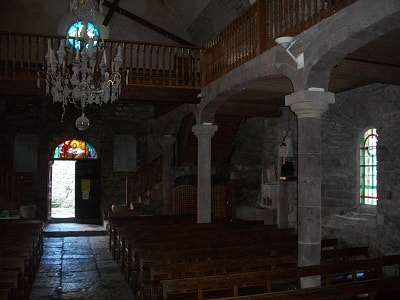 The church houses a small 14th-century statuette called the “Cagassou,” which represents a man squatting in an unambiguous position. It is located at the corner of a house near the post office. It testifies to the popular humor and freedom of expression of the time. It is also a symbol of fertility and prosperity and is the subject of legends and traditions. Some say that one must touch it to have luck, while others say that it must be stroked to have children.
The church houses a small 14th-century statuette called the “Cagassou,” which represents a man squatting in an unambiguous position. It is located at the corner of a house near the post office. It testifies to the popular humor and freedom of expression of the time. It is also a symbol of fertility and prosperity and is the subject of legends and traditions. Some say that one must touch it to have luck, while others say that it must be stroked to have children.
The comb bell tower is a typical architectural element of Romanesque churches. It is a wall bell tower with two levels, consisting of two openings surmounted by a small bell tower and a pinnacle. It is topped with a small wooden roof to protect it from the elements. It has several round arches, which allow the bells to ring. Its characteristic shape, which undeniably resembles that of a hair comb, naturally earned it this original name. It dates back to the 13th century, as evidenced by a stone from its granite facing that bears the date 1306. It was restored in the 19th century, along with the church's nave.
The comb bell tower is a distinctive feature of Romanesque churches in southern France, particularly in Auvergne, Languedoc, and Provence. It is often associated with rural or isolated churches that did not have the means to build more elaborate bell towers. It also reflects a Hispano-Moorish influence that spread through the Pyrenees and the Midi. Finally, it is a witness to a time when bells played a significant role in daily and religious life, as they marked the hours, prayers, festivities, and alerts.
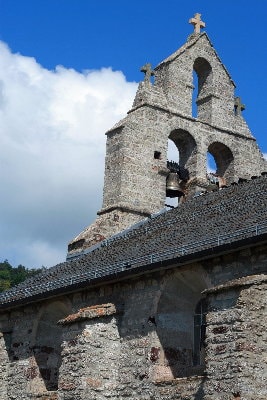 The Church of St. Peter is a place of worship that hosts various rich celebrations throughout the year. These celebrations provide an opportunity to highlight the religious and cultural heritage of the region, as well as to strengthen the bonds between the inhabitants and visitors. Here are some examples of celebrations that enliven the church in Luc:
The Church of St. Peter is a place of worship that hosts various rich celebrations throughout the year. These celebrations provide an opportunity to highlight the religious and cultural heritage of the region, as well as to strengthen the bonds between the inhabitants and visitors. Here are some examples of celebrations that enliven the church in Luc:
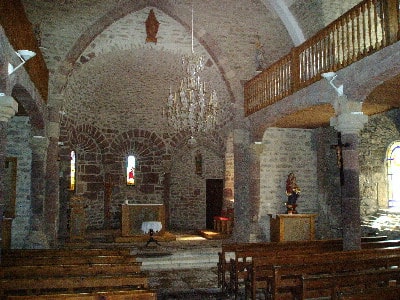 The Feast of St. Peter, on June 29, honors the patron saint of the church in Luc. This feast is one of the oldest and most important in the village. It begins with a solemn mass, followed by a procession that winds through the village streets, accompanied by the bells of the church, which are classified as historical movable objects.
The Feast of St. Peter, on June 29, honors the patron saint of the church in Luc. This feast is one of the oldest and most important in the village. It begins with a solemn mass, followed by a procession that winds through the village streets, accompanied by the bells of the church, which are classified as historical movable objects.
The procession stops in front of Luc Castle, where the statue of the Virgin is located, to pay homage. The feast ends with a convivial meal, where local specialties such as truffade or charcuterie are enjoyed.
The Feast of the Virgin, on August 15, celebrates the statue of the Virgin installed on the donjon of Luc Castle. This statue, which measures 2.50 meters high, is made of white-painted cast iron. It is visible from afar and dominates the landscape. It is the object of great veneration from the inhabitants of Luc, who attribute miracles and graces to it. It is also a landmark for hikers and tourists visiting the region. The Feast of the Virgin begins with a mass, followed by a blessing of the herds, gathering breeders and their animals. The feast continues with a picnic, where bread, cheese, and wine are shared.
The Feast of St. Michael, on September 29, celebrates the patron saint of the village of Luc. This feast is more recent than the previous two, but it is equally popular. It begins with a mass, followed by a blessing of the harvest, symbolizing the end of summer and the beginning of autumn. The feast continues with folkloric performances, showcasing dances, songs, costumes, and traditional instruments. The celebration ends with a ball, where people dance until the end of the night.
Former holiday hotel with a garden along the Allier, L'Etoile Guest House is located in La Bastide-Puylaurent between Lozere, Ardeche, and the Cevennes in the mountains of Southern France. At the crossroads of GR®7, GR®70 Stevenson Path, GR®72, GR®700 Regordane Way, GR®470 Allier River springs and gorges, GRP® Cevenol, Ardechoise Mountains, Margeride. Numerous loop trails for hiking and one-day biking excursions. Ideal for a relaxing and hiking getaway.
Copyright©etoile.fr